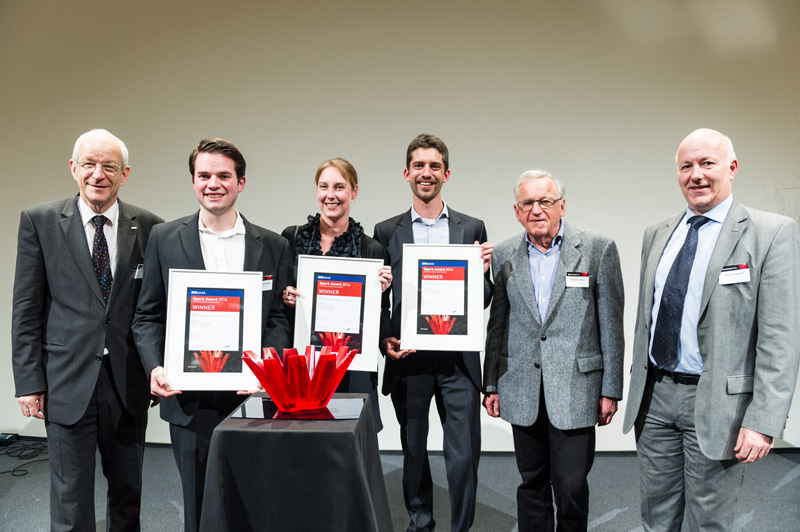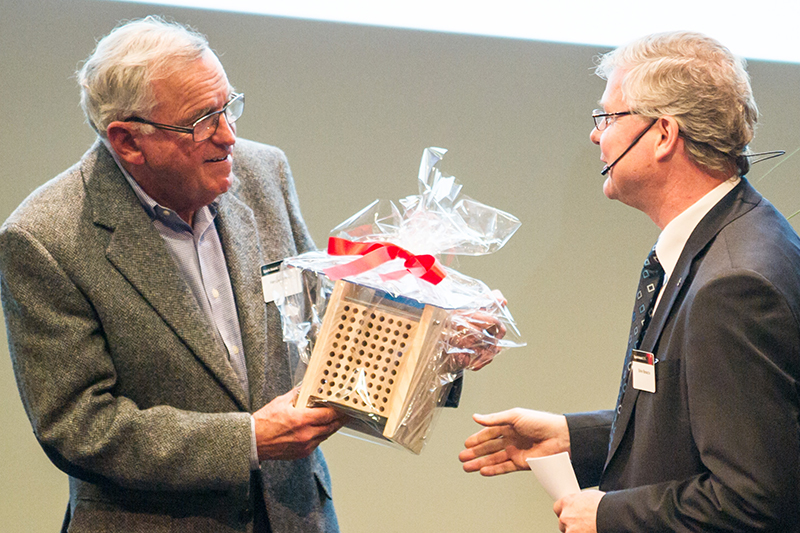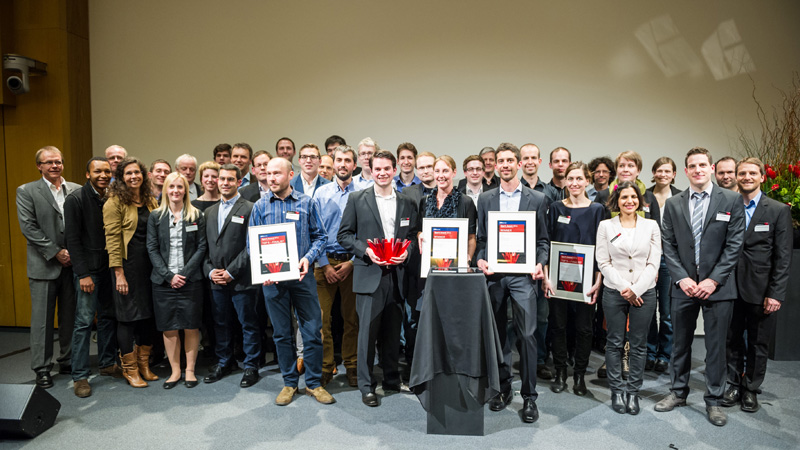Great prospects for storage technology
ETH Zurich’s Spark Award 2014 goes to a group, led by Professor Jennifer Rupp, that has developed a powerful and energy-efficient data storage device for mobile electronic devices. ETH Zurich awarded the prize to its most innovative and economically promising innovation of the past year.

Bright ideas with a high market potential – this is precisely what the Spark Award, awarded by ETH Zurich every year for the most economically promising invention, represents. “The ETH promotes entrepreneurial activity and technology transfer using various means,” says Professor Roland Siegwart, ETH Vice President for Research and Corporate Relations. However, brilliant researchers still remain crucial for success. “The Spark Award is a symbol of the ingenuity and innovation of our scientists.”
ETH researchers succeeded in making 171 inventions last year, of which 103 patents are pending. The specialists from ETH transfer, the university’s technology transfer unit, chose five excellent patent applications and passed them on to a jury of seven members, which then judged the ideas based on their originality, the strength of the patent protection and their commercial potential.
New data and computer storage for transistor use
Jennifer Rupp, Professor for Electromechanical Materials, Sebastian Schweiger and Felix Messerschmitt won the competition for the most promising patent application of the past year. They have developed a concept for a very powerful and efficient memory module that may lead to a new generation of data storage devices, such as flash memory in USB sticks or central memories in computers. The invention is particularly suitable for use in future mobile electronic devices to increase functionality and data density. According to the award winners, the technology may also help to replace transistors one day as the dominant electronic part and to develop new processor logics.
In specific terms, the technology concerns a ‘memristive’ storage device (Video ), where the term memristive is a combination of the words ‘memory’ and ‘resistor’. The chip is based on the recent ReRAM (Resistive Random Access Memory) technology, which saves data through the storage medium’s electrical resistance. To date, memristive storage devices have consisted of a simple sandwich structure: two metal layers clamp together a central oxide film. Rupp’s team has now succeeded in replacing the oxide film in the sandwich with several tightly wound oxide films and to thus fine-tune the storage device. This not only shortens the write-read time and reduces energy consumption, but also increases the density and lifespan of the stored information.
The invention has great economic potential: experts estimate that the flash storage device market alone – worth more than $40 billion – will grow by 7%-11% in the next few years.
An outsider’s view of a successful entrepreneur

Hansjörg Wyss, former CEO and Chairman of Synthes, talked about innovation from an entrepreneurial perspective. An ETH alumnus, who made history in the industrial sector with the development of the medical technology group, spoke about the challenge of maintaining a fertile ground for innovation in large firms. “When companies grow, they become rigid,” said Wyss. He had noticed this tendency at Synthes. However, innovation cannot be delegated – instead the right company culture has to be initiated from the top, and defended and maintained.
Synthes manufactures implants to fix bone fractures. “I have never had a five-year plan or anything like that,” said Wyss. His strategy is simply to renew products on an on-going basis. However, the company does not just sell splints and bone screws, but constantly improves surgical treatment solutions. “The close collaboration with research centres and direct access to clinics is a key factor here,” he noted.
At the end of his talk, Wyss pointed out that the journey from an invention to a marketable product is full of hurdles: from the founding of a company and financial issues to the balancing act between research existence and management. “If the thought of this scares you,” he said with a cheeky grin, “you are better off staying in academic research.”
Other finalists and their inventions
Four other research groups qualified for the Spark Award 2014 with the following ideas:
Improved wound healing by structured cellulose patches (Prof. Dimos Poulikakos, Simone Bottan, Aldo Ferrari, Maximilian Fischer, Tobias Lendenmann). external pageVideocall_made
Live metric and interactive 3D reconstruction on mobile phones
(Prof. Marc Pollefeys, Petri Tanskanen, Lorenz Meier, Kalin Kolev). external pageVideocall_made
Smart dynamic casting of free-form concrete structures
(Prof. Robert Flatt, Prof. Fabio Gramazio, Prof. Matthias Kohler, Ena Lloret Kristensen). external pageVideocall_made
A highly stable antimicrobial protein
(Prof. Markus Aebi, Prof. Gerhard Wider, Daniela Hofmann, Andreas Essig, Markus Künzler). external pageVideocall_made

